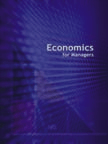PSA Peugeot Citroen - Strategic Alliances for Competitive Advantage




|
|
ICMR HOME | Case Studies Collection
Case Details:
Case Code : BSTR211
Case Length : 22 Pages
Pages Period : 1966-2006
Organization : PSA Peugeot CitroŽn
Pub Date : 2006
Teaching Note : Available
Countries : France, Western Europe
Industry : Automobile
To download PSA Peugeot Citroen - Strategic Alliances for Competitive Advantage case study (Case Code: BSTR211) click on the button below, and select the case from the list of available cases:

Price:
For delivery in electronic format: Rs. 400;
For delivery through courier (within India): Rs. 400 + Rs. 25 for Shipping & Handling Charges
Ľ Business Strategy Case Studies
Ľ Case Studies Collection
Ľ Business Strategy Short Case Studies
Ľ View Detailed Pricing Info
Ľ How To Order This Case
Ľ Business Case Studies
Ľ Case Studies by Area
Ľ Case Studies by Industry
Ľ Case Studies by Company
Please note:
This case study was compiled from published sources, and is intended to be used as a basis for class discussion. It is not intended to illustrate either effective or ineffective handling of a management situation. Nor is it a primary information source.
|
|
<< Previous
EXCERPTS Contd...
Going it Alone
PSA was well aware that in an increasingly competitive market, it could sell more only if its vehicles were superior, distinct and offered unique advantages. Therefore, in spite of its many alliances, PSA
was investing in excess of € 2 billion in exclusive research & development
facilities and projects.
|
Pascal Henault, Vice-President (Innovation and Quality) said, "Innovation is a way to differentiate our cars in terms of concepts, styling and features that deliver perceptible customer benefits at affordable cost."
At its R&D centers at Belchamp La Garenne-Colombes and Velizy, hundreds of engineers and scientists were working towards new and innovative solutions, with the result that PSA filed more than 300 patents every year. In October 2004, PSA unveiled a new design center named Automobile Design Network near Paris to give a further thrust to its research initiatives...
|
|
Challenges Volkswagen was the undisputed leader (in terms of the number of cars sold) in the European car market in 2005. Even though PSA continued to retain its second position in Europe, the gap with Volkswagen was widening. Volkswagen managed to increase its market share from 18.6% in 2004 to 19.3% in 2005, while PSA's share fell from 13.8% to 13.5%. Though Toyota was a distant eighth in the rankings, it had improved its sales in a shrinking market. Moving towards its goal of capturing 15% of the world automobile market by 2010, Toyota was intensifying its efforts in Europe - an important market for the carmaker...
Outlook
The Peugeot 207 was unveiled in early 2006, and was a successor to Peugeot 206 - the company's most popular car ever. In 2005, PSA had launched several models including the Peugeot 407 (saloon), the 407 coupe, the 1007 - a small car with electric sliding doors, the 107, the CitroŽn C1 city car, and the CitroŽn C6 luxury limousine.
In January 2006, PSA launched a new fuel cell called 'Genepac'. Genepac was considered a major step in fuel cell technology because it could power a car for a distance of upto 500 kms, which was much more than all other fuel cells available in the market...
|
|
Exhibits
Exhibit I: Peugeot Logo and Citroen Logo
Exhibit II: New Model Launches Between 1977 and 2005
Exhibit III: Region-Wise Sales* of PSA
Exhibit IV: List of Models
Exhibit V: Strategic Alliances in the Automobile Industry
Exhibit VI: Making Alliances Work
Exhibit VII: PSA's Worldwide Production Sites
Exhibit VIII: Financial Data of PSA Consolidated Sales and Revenue
Exhibit IX: Worldwide Sales and Production of PSA
Exhibit X: Europe Automobile Market Shares in 2005
Exhibit XI: World Automobile Market in 2005
Exhibit XII: A Photograph of the Peugeot 207

|



